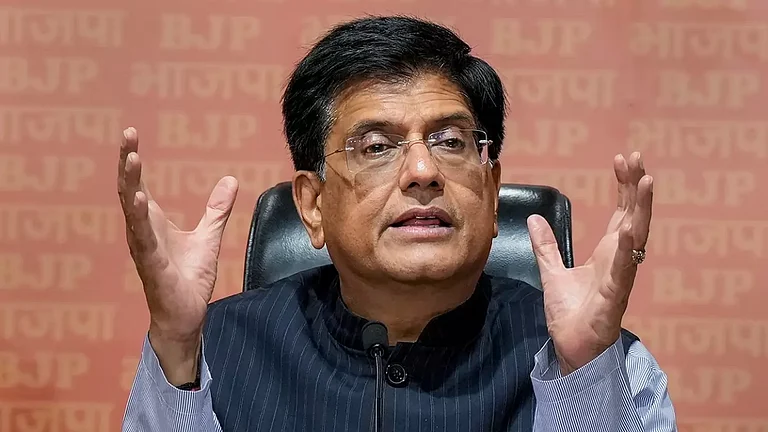Low prices of steel in the market now is a problem for small companies, especially when the government is aiming to increase capacity of this important sector in the next five to seven years, Steel Secretary Sandeep Poundrik said on Tuesday.
Low Prices Of Steel Problem For Small Companies: Secretary
Low prices of steel in the market now is a problem for small companies, especially when the government is aiming to increase capacity of this important sector in the next five to seven years, Steel Secretary Sandeep Poundrik said on Tuesday.
Addressing the 'STEEL SUMMiT 2025', Poundrik said five years ago prices of the steel were higher than what they should have been.
"But today prices of steel are lower than what they should have been. So price is a challenge... Small players are facing problems," he said.
Poundrik said that about 150 small players have stopped production of steel because of low price.
So people, these small players, are facing problems. You just saw the results of quarter 2 of all companies, almost all of them, the profit margins reduced, he said.
"But price is a problem, especially when, when we need to invest in 100 million tonnes of capacity in next maybe five to seven years," he said.
The secretary also pointed out the surplus production across the world specially in China and consequent dumping is a real problem, not only for us, but for every country.
"Because it is impacting the prices," he said.
Poundrik said that the government is trying to ensure that domestic steel players get a reasonable price.
"The government imposed safeguard duty provisionally on imported steel to ensure that domestic steel industry doesn't face any problem," he said.
Poundrik said the good news is that steel consumption is increasing, capacity is increasing.
"To cater to the increasing consumption, the new capacities are coming up in last 10 years, " he said The secretary noted that there is need to protect the steel industry for the long-term self reliance of the country.
"It's a strategic sector, in the sense that if you become dependent on imports, then you may face problems because of geopolitical reasons which we are seeing today in the world.," he said.
Dispelling the perception that steel industry is dominated by 3-4 big players, Poundrik said that 47% of steel in India is produced by 2,200 middle-level steel producing companies.
He said the Ministry of Steel is working closely with the Ministry of Coal to increase the share of domestic coking coal in steelmaking, ensuring greater self-reliance and security in raw material supply.
The government is also taking proactive measures to ensure that cheap and substandard steel does not flood the Indian market, the steel secretary added.
Poundrik said the hydrogen prices are coming down much faster than what "we were expecting".
"Maybe in the next five to 10 years, hydrogen will become a viable alternative to natural gas, and the hydrogen route can become a viable option for green steel," he added.
Poundrik said there is need to make more investments and focus on specialty steel.
"Because as our defense sector grows, we will need more and more specialty steel," he added.
Poundrik said with consistent growth in consumption and capacity along with rising opportunities from specialty steel and green steel, India is on its way to achieve the annual production target of 500 million tonnes by 2047.
"The government is also taking proactive measures to ensure that cheap and substandard steel does not flood the Indian market.
"Through Quality Control Orders (QCOs), we are creating a level-playing field where both domestic and foreign producers meet the same quality benchmarks," he said.
Tata Steel Ltd executive director Koushik Chatterjee highlighted that steel forms the backbone of India's industrial transformation and national resilience.
As the foundation for construction, transport, energy, and manufacturing, the sector will be pivotal in shaping world-class infrastructure, modern cities, and sustainable growth, Chatterjee added.
He noted that under the National Steel Policy, India aims to achieve 300 million tonnes of capacity by 2030–31 and 500 million tonnes by 2047, positioning steel at the heart of the country's development agenda.
JSW Steel Ltd Joint Managing Director & CEO Jayant Acharya said that rapid urbanisation, a growing middle class, and rising discretionary spending are creating strong demand prospects for the steel industry.
He underlined that the future growth of India's steel sector rests on three key pillars -- strategic investment, self-reliance, and sustainability -- which together will ensure both economic and environmental resilience.
Highlighting the close linkage between steel demand and GDP growth, Acharya observed that the industry's elasticity with GDP has remained around 1.5 times in recent years, reflecting its deep integration with India's economic trajectory.
He further stressed that every steel plant acts as a catalyst for regional development by generating livelihoods and uplifting local communities.
With abundant raw materials, skilled manpower, and a robust domestic market, Acharya affirmed that India holds a unique advantage to build a globally competitive and self-reliant steel ecosystem
